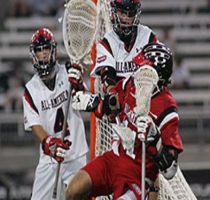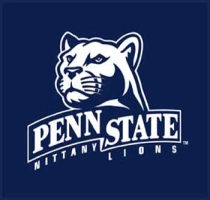Penn St. plans to announce new season ticket pricing that would account for seat location
By Genaro C. Armas, APThursday, November 19, 2009
New Penn St. tix plan to account for seat location
STATE COLLEGE, Pa. — Penn State plans to adjust its season-ticket pricing guidelines in 2011 to account for where people sit in Beaver Stadium.
Some fans might have to fork over more money to the booster club to stay in their seats, or can pay the same amount but possibly be moved to a less desirable location — say someone going from seats on the 40 to behind the end zone.
Other season-ticket holders could be just fine — again, depending on if their donation to the Nittany Lion Club is commensurate to where they want to sit.
The actual price of the tickets, currently $55, wouldn’t change under the plan to be officially unveiled in a letter to season-ticket holders in the next week, said Greg Myford, Penn State’s associate athletic director for business relations and communications.
What would change is that seat location would be a new criteria to giving levels to the Nittany Lion Club, along with the number of tickets and parking.
The Patriot-News of Harrisburg first reported the new policy, including up to a $600 fee per seat in between the 40-yard lines. Currently, Nittany Lion club members must contribute at least $100 a seat to renew their season tickets, regardless of location.
Myford declined to comment on the dollar amounts in the Patriot-News report, though he said the new policy didn’t amount to a personal seat license.
“The primary difference is, usually associated with the seat license is some kind of long-term commitment,” Myford said this week. “We do our tickets annually, each and every year. Fans determine how many seats they want to buy, they donate accordingly, and that will continue.”
Myford said schools like Ohio State, Michigan, Texas and Florida already have similar plans in place.
“The other key component, when it comes down to the primary reasons for doing it, it’s finances, and it’s fairness,” Myford said. “We need to come up with a way that allows us to properly align and allocate our tickets with how someone is willing to support athletics on an annual basis, and currently we don’t do that.”
All but two Big Ten schools — Indiana and Northwestern — charge minimum donations for the right to buy season tickets, according to a survey Wednesday in The Altoona Mirror.
Penn State is in the middle of the Big Ten in terms of season-ticket prices. One ticket at the 45-yard line would cost $540 for an eight-game schedule; the most expensive ticket is the $1,950 at Ohio State, which includes a $1,500 minimum donation.
The Penn State plan would also shuffle the student section from its current location in one quadrant of the stadium from the 40 to the south end zone, to wrapping around the entire end zone, bookended at about the 10-yard lines. That would open more desirable seats to season-ticket holders.
Myford said possibly 800 more seats could be added to the student section, and that the hope is it would create a more intimidating atmosphere for opponents.
Penn State’s athletic department is self-supporting and does not use tuition dollars or other university funding to pay for its large athletics program, which runs 29 sports.
Of those sports, only football and men’s basketball operate at a profit. Revenues from football are used to help pay for other sports.
The most recent filing with the Department of Education shows Penn State athletics had nearly $96 million in revenues, and roughly $77 million in expenses last year. The expense figure does not include $11.3 million of debt service.
Remaining dollars are used for capital improvement projects or put in reserve, the department said in the government filing. Myford said things like fan requests to upgrade stadium concessions stands and restrooms would be the kinds of projects Penn State would look at in the future.
Once athletic director, coach Joe Paterno said the school has more pressure to support scholarships in women’s sports, as well improving facilities like the softball field.
“We don’t get a nickel from the university for anything,” Paterno said. “(Athletics) is completely self-supporting. So they’ve got to do something or we’ve got to cut back sports, and we don’t want to do that. But, that’s not my bout.”
Tags: College Football, College Sports, North America, Penn state, Pennsylvania, School Athletics, Sports, State College, United States

